ENGLISH-FON-GNM UNIT-5 INFECTION CONTROL-UPLOAD
INFECTION CONTROL
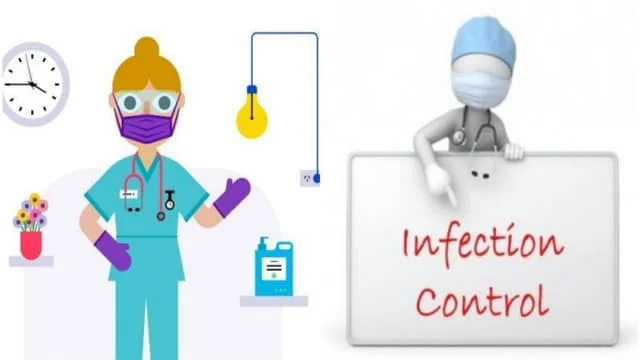
Terminologies
1) Asepsis
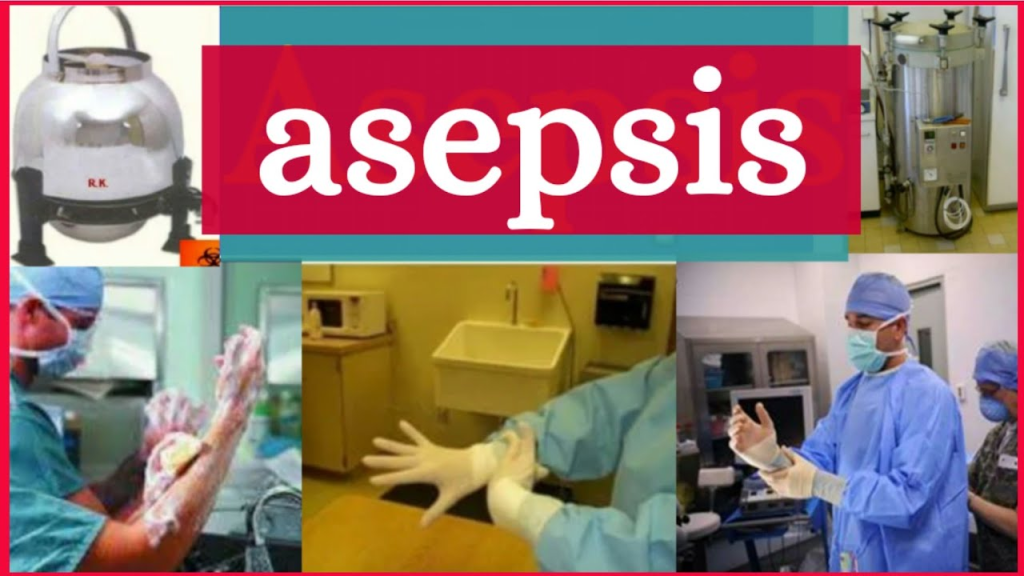
This is a state in which a person or thing is free from infectious microorganisms which is called ASEPSIS.
2) ANTISEPSIS (Antisepsis)
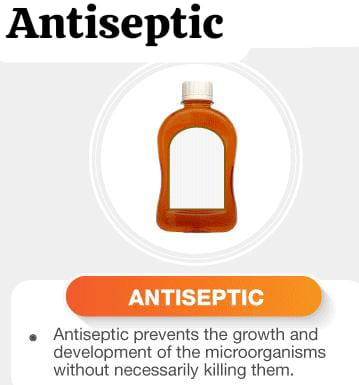
Antisepsis means prevention of infection means avoiding infection. Antiseptic or antiseptic chemical is a type of agent that inhibits the growth and development of microorganisms and does not cause infection.
3) PATHOGENIC ORGANISM (pathogenic organism)
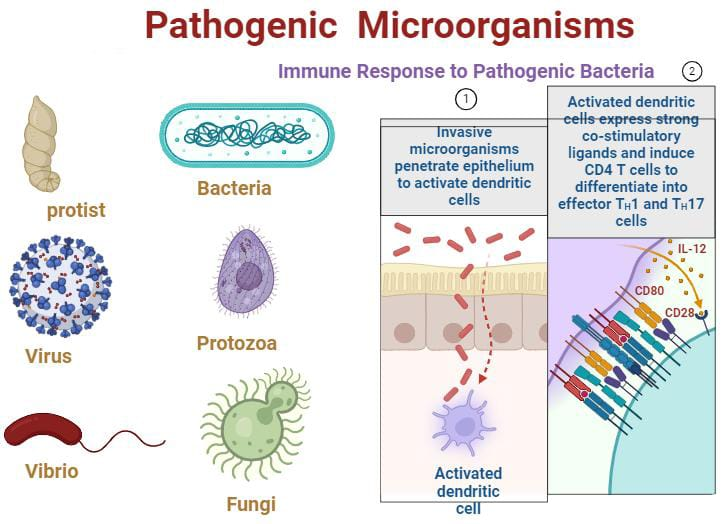
Pathogenic organisms are microorganisms that cause disease.
4) SPORE (spores)
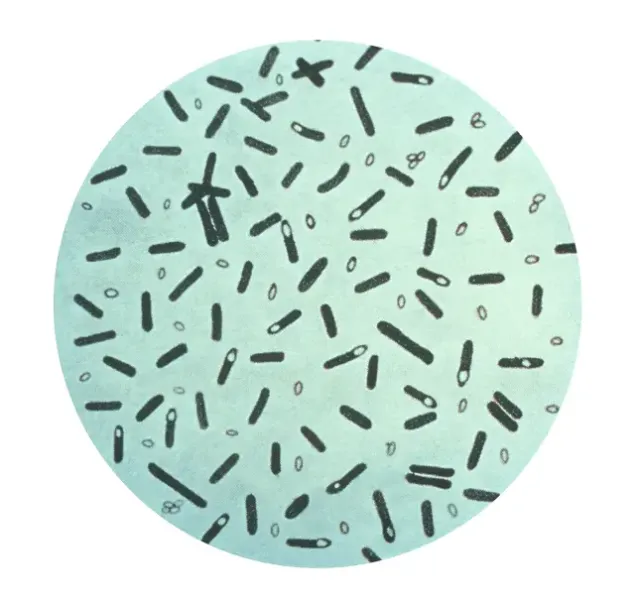
A spore is a microscopic, unicellular and dormant structure, produced especially by bacteria, fungi, algae and protozoa and which is designed to survive in extremely adverse conditions. Some species, such as Bacillus and Clostridium, form endospores, which are highly resistant to temperature, chemical agents, radiation, and dryness. Spores are usually formed for reproduction or survival and under favorable conditions, they reactivate and develop into new organisms.
OR
Spores are resistant microorganisms. Resistance means that when heat is applied to a microorganism, it does not suffer from the heat or we cannot disturb and destroy it with heat. It can survive the heat. It is very important to take care during surgical asepsis. In surgical asepsis, great care has to be taken to ensure that all the instruments are properly aseptic or not, if there are spores or microorganisms left in them, then it can infect the patient.
5) DIRECT TRANSMISSION (Direct Transmission)
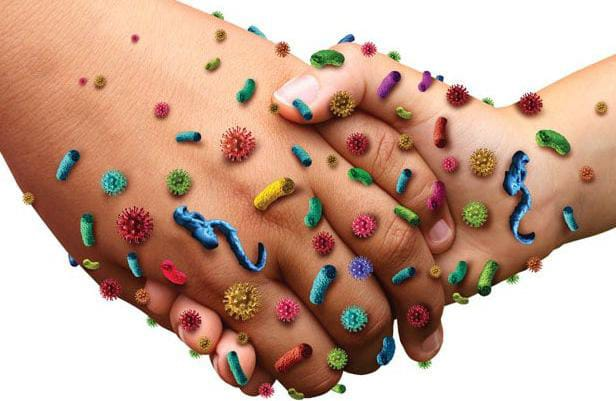
In direct transmission, the infection spreads through direct contact with an infected person. Like droplet, airborne infection.
6) SEPSIS

Sepsis is caused by pus forming microorganisms. Due to the presence of bacteria, the bacteria produce a toxin in the body that causes tissue death and the formation of pus. – Generally this situation is seen when the wound (inflected wound) is infected.
7) STERILIZATION
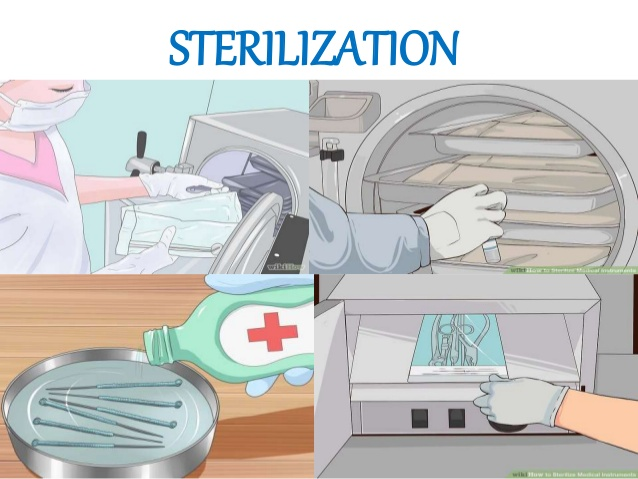
Sterilization is the process of destroying microorganisms, the process of killing them. In which pathogenic, non-pathogenic and spores are all killed and the object or instruments become totally infection free.
8) DROPLET INFECTION
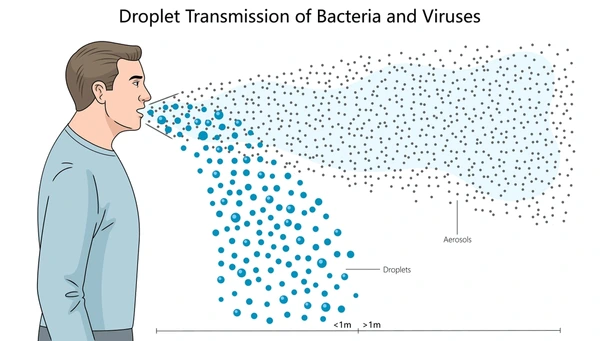
This infection is spread by small particles, meaning it spreads by fine particles. Such as, saliva i.e. nuclei of saliva, nuclei of mucus which are spread by sneezing, coughing or talking.
9) FUMIGATION
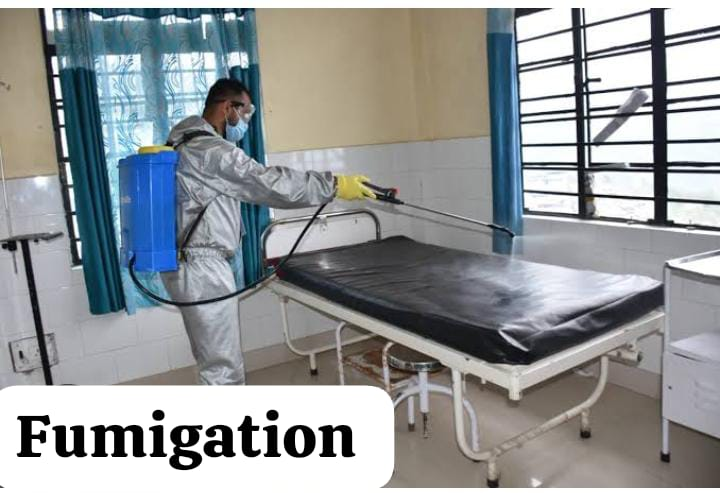
This is a disinfection process that uses a fume of germicide to disinfect everything.
10) ISOLATION
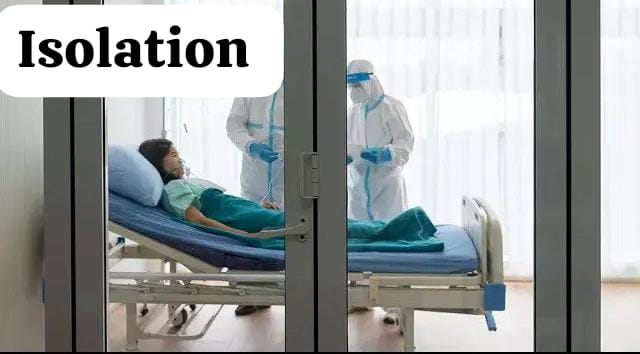
Isolation is the process of keeping an infected person and a non-infected person separate. In which the infected person is kept alone for a certain period of time to prevent the infection from spreading to other non-infected persons.
11) PORTAL OF ENTRY
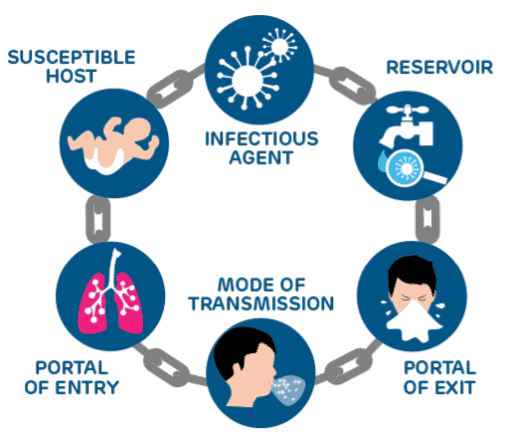
Portals of entry are WAYS through which pathogens enter the body. For example, :- Respiratory track, Gastro intestinal track etc.
12) PORTAL OF EXIT (Portal of Exit)
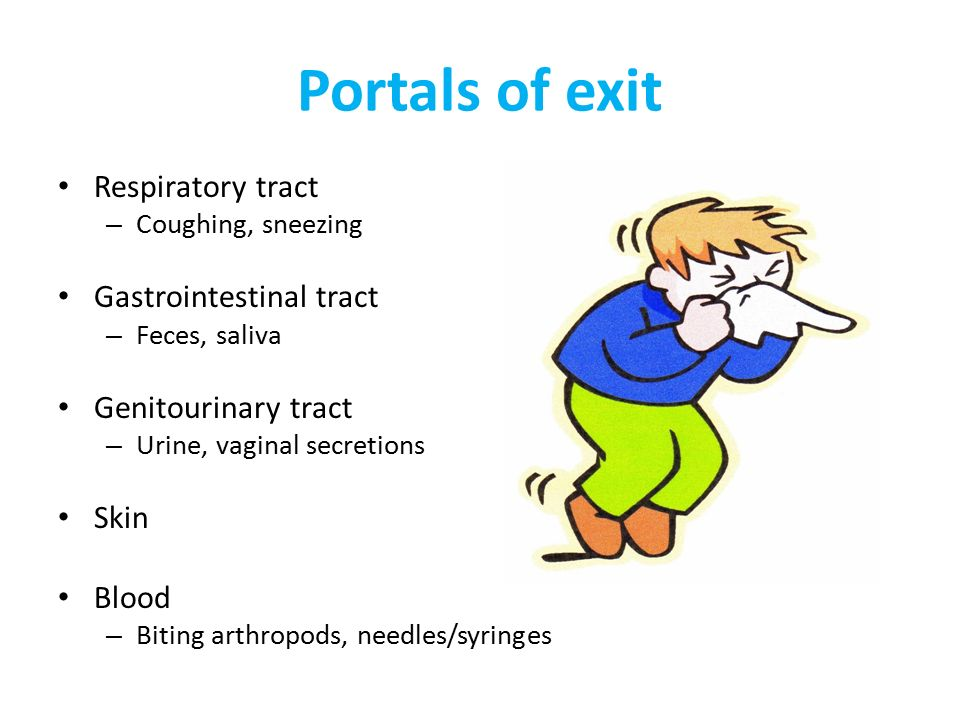
This is a way in which disease causing microorganisms exit the body. E.g. :- Body fluid coming out of the urinary tract
13) QUARANTINE
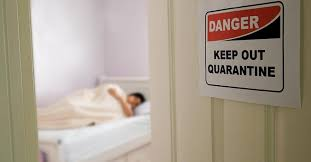
Quarantine means isolating a healthy person for a short period of time because they have been in contact with an infected person. Therefore, the non-infected person is quarantined for the period of time till the incubation period of that disease is over.
14) CARRIER
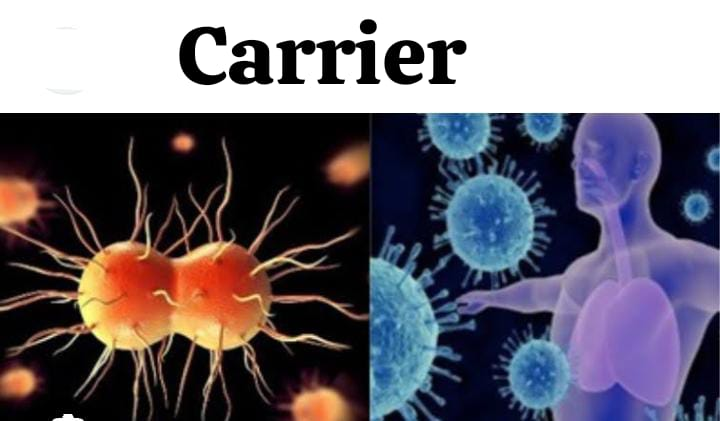
A carrier is a person who has a pathogenic organism (a microorganism that causes disease) inside them, but does not show signs or symptoms. But it can infect another person who is known as a carrier.
INFECTION CONTROL
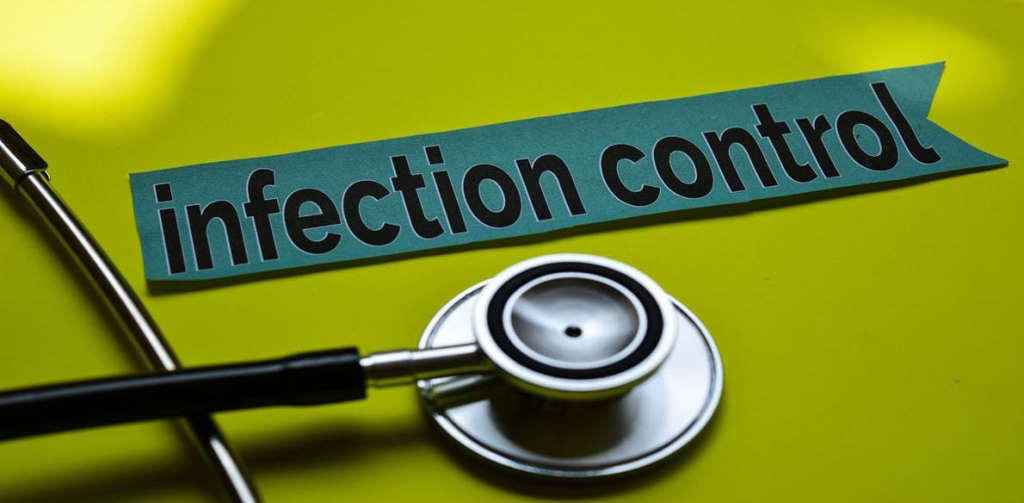
Our today’s health care system takes great care to provide a safe and microorganism free (infection free) environment to the client.
According to WHO, 15% of hospitalized clients suffer from hospital acquired infection, which can be prevented with very small measures
So we have to look at the chain of infection (how infection occurs) and how it can be avoided.
WRITE DOWN NATURE OF INFECTION
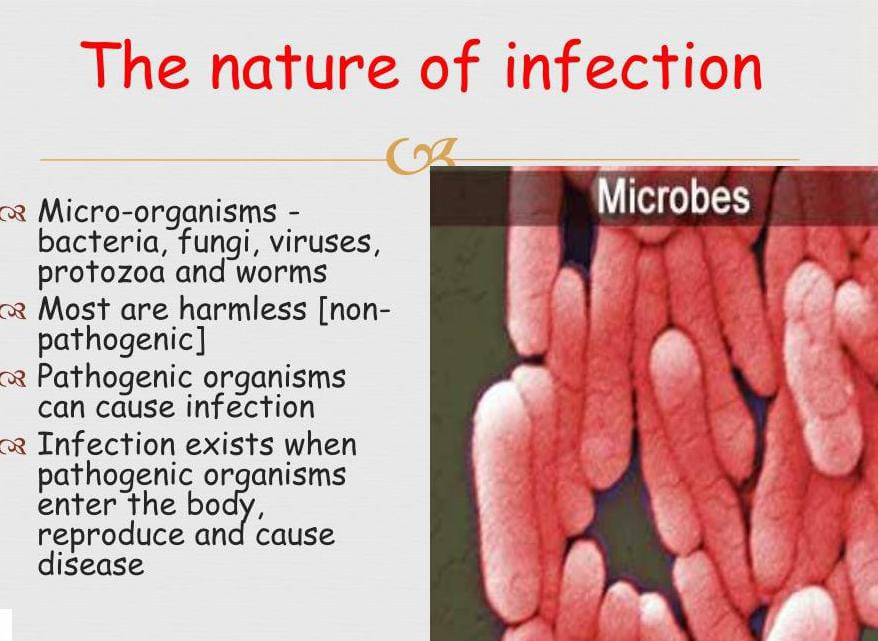
Infection is caused by different microorganisms such as bacteria, viruses, fungi, parasites.
Bacterial infection :
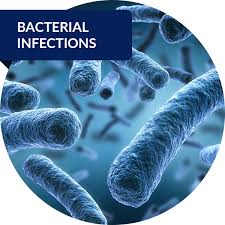
Bacterial infections are caused by bacteria, which include disease conditions like urinary tract infections, TB, pneumonia
Viral infection (viral infection):
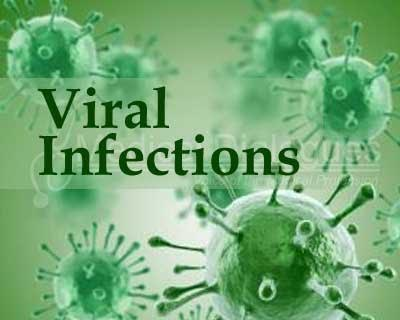
Viral infections are caused by viruses such as HIV, influenza, H1N1, hepatitis.
Fungal infection (fungal infection) :
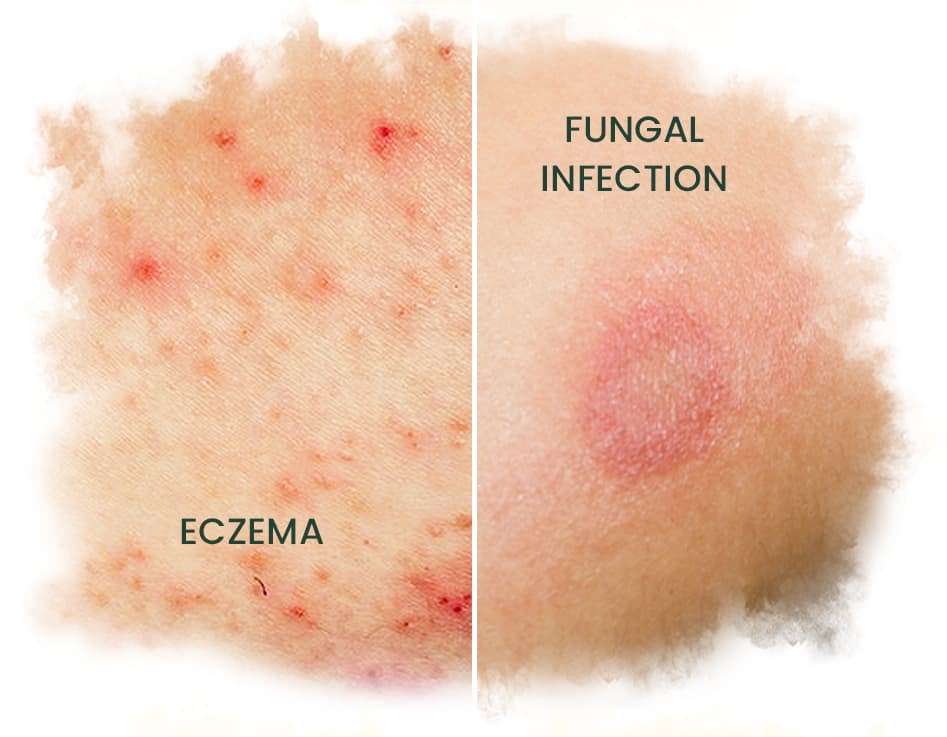
Fungal infections are caused by fungi such as ringworm, candidiasis, etc.
Parasitic infection (parasitic infection):
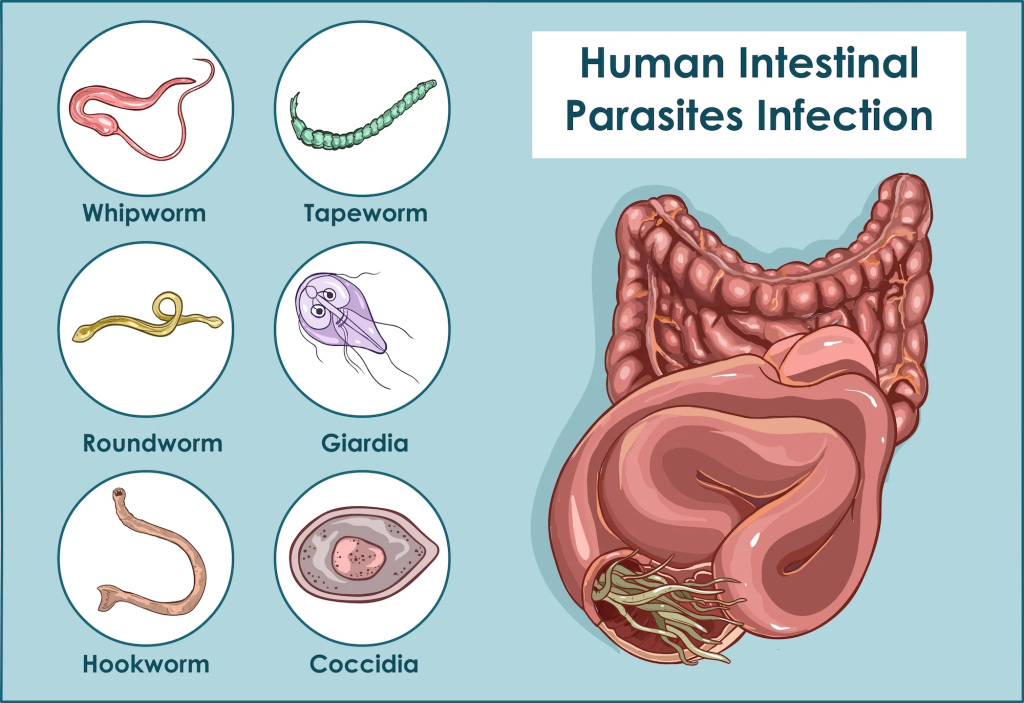
A parasitic infection is an infection in which microorganisms called parasites absorb all the nutrition from the host (the host i.e. whatever organism it infects) and cause infection. Such as toxoplasmosis, malaria, hookworms and all diseases caused by worms.
Write down chain of infection
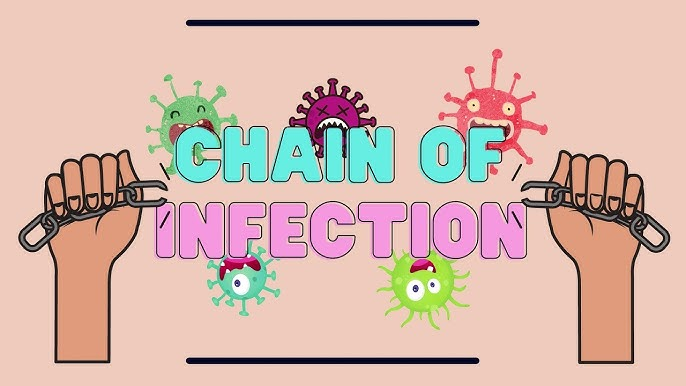
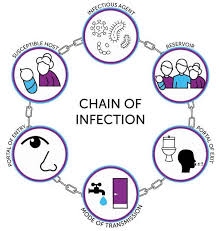
•Chain of Infection This process or cycle by which we can understand how an infection spreads is called a chain of infection.
• A total of six steps are seen within the chain of infection and through which we can know how the entire chain is formed and we can break that chain, but to break the chain, it is necessary to know the steps of the chain of infection, which are as follows:
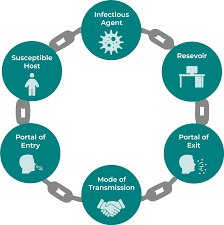
1) Infectious agent
Infectious agent means such microorganisms that cause disease such as bacteria, viruses, fungi, protozoa, parasites etc. Microorganism means the ability of microorganisms to cause disease which is independent of certain factors, some of which are as follows. Sufficient number of organism means how many organisms or in what quantity. Does it have the ability to cause disease, does it have the ability to survive within the host – and how susceptible is the host, for example, if the unity of the host is compromised, then the host can be called susceptible.
2) Reservoir
A reservoir is something in which a pathogen can survive. It can be an animal, a person, food, water, or any object, i.e. things on which the pathogenic organism lives and grows and then from there Causes infection.
3) Portal of exit
Portal of exit is where the microorganism exits from the reservoir.
4) Mode of transmission
Mode of transmission means direct contact, indirect contact which is with infection which can be contaminated air, water, blood, food, flies i.e. mosquitoes, all these are common modes of transmission. That is, which commonly spreads whatever infection is. The major mode of transmission is through microorganisms from a health care provider, such as a nurse or doctor.
5) Portal of entry
Portal of entry is the way through which the microorganism enters the body, such as through the skin, respiratory tract, or blood.
6) Susceptible host (Susceptible host)
A susceptible host is a host or person who is likely to get an infection. The susceptibility of the host, i.e. whether it can get infected or not, depends on how harmful the microorganism is and the immune system of the host, i.e. the infected person.
WRITE DOWN PREVENTION OF CROSS INFECTION IN HOSPITAL

Preventive measures to avoid infection within the hospital are as follows:
• There should be good air circulation in the hospital i.e. the hospital should be well ventilated.
• There should be general cleanliness in the hospital such as sweeping, mopping should be, and the floor should be cleaned with an antiseptic solution.
• There should be a safe food and water supply in the hospital because many diseases can be spread through food and water, so it should be safe.
• Safe disposal of excreta: That is, the waste that is discarded should be discarded properly and safely, such as urine, stools, sputum, etc.
• Discard or burn the waste that is generated every day, so that we can prevent the spread of infection.
• Rats and Prevent the spread of insects because they can spread disease.
DEFENCE AGAINST INFECTION
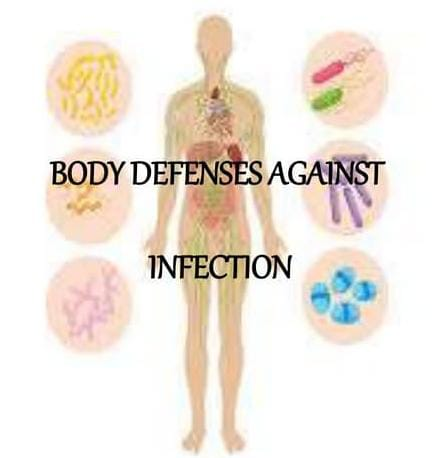
The following is how the body protects itself against infection. It mainly consists of 5 types :-
1) ACTIVE IMMUNITY
2) PASSIVE IMMUNITY
3) HUMORAL IMMUNITY
4) CELLULAR IMMUNITY
5) HERD IMMUNITY
1) ACTIVE IMMUNITY
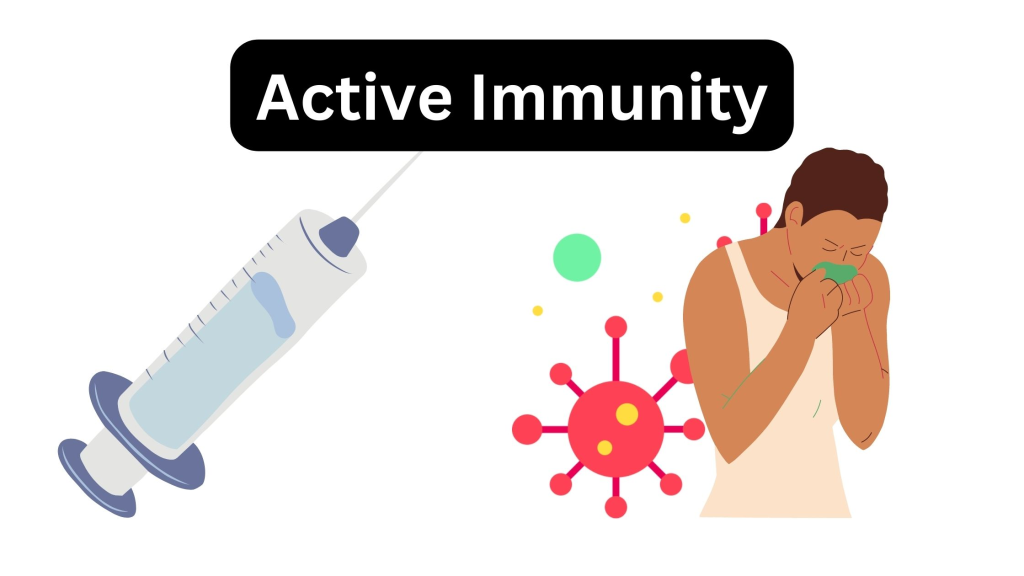
When any infection occurs for the first time, as a result, the body builds a defense against the infection, i.e. produces antibodies so that when antigens (microorganism that causes infection) enter the body for the second time, those antibodies fight against the antigen and protect the body from infection. This immunity is called active immunity. In which no antibody is introduced into the body from outside, but antibodies are produced from within the body itself. This is long acting immunity. E.g.:- The body produces antibodies against chicken pox, rubella infections. Or if any vaccine is given, the body produces antibodies against it.
2) PASSIVE IMMUNITY
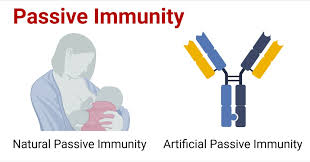
In passive immunity, antibodies are not produced inside the body but are directly introduced into the body. Which can be natural as well as artificial. E.g.:- If IgA antibody from mother’s breast milk enters the baby’s body, then this is called natural passive immunity. When a person is bitten by a snake, he is given anti snake venom serum which is called artificial passive immunity. Similarly, anti rabies serum is given in case of dog bite. This is short acting immunity.
3) HUMORAL IMMUNITY
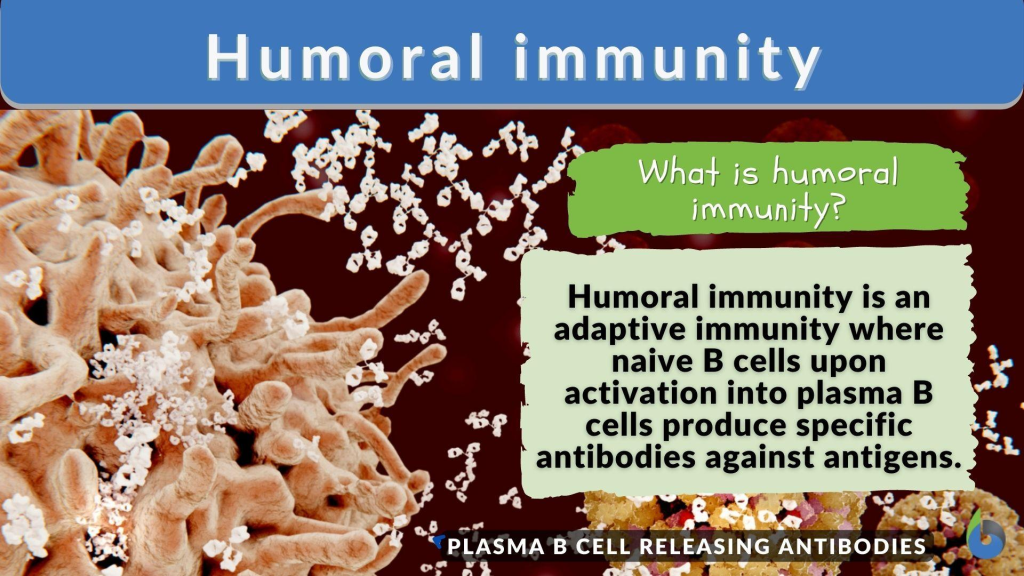
In humoral immunity, antibodies produced by B cells fight. When an antigen enters the body, the antibody fights with the antigen. E.g. :- IgG, IgM, IgA ,IgD
4) CELLULAR IMMUNITY
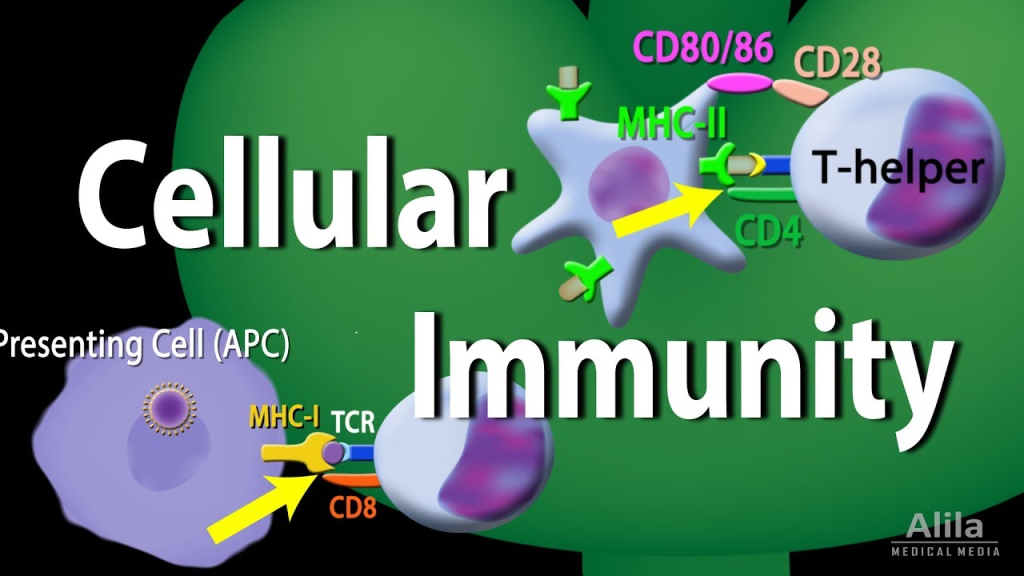
When the function of humoral immunity is not enough, T cells are activated and kill the antigen by the process of phagocytosis.
5) HERD IMMUNITY

People living in certain specific areas develop resistance to infections that occur frequently in their community, so they do not get infected, which is called herd immunity. Herd immunity is only seen in people of a specific community.
WRITE DOWN HOSPITAL ACQUIRED INFECTION
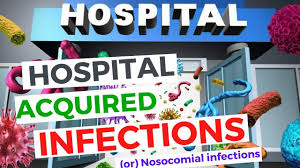
• Hospital Acquired Infection (HAI) is also known as Nosocomial infection.
• A hospital acquired infection occurs during hospital treatment or within 48 hours of admission or 30 days of discharge is called HAI (Hospital Acquired Infection).
The common types of which are as follows (Types of Hospital Acquired Infection ):
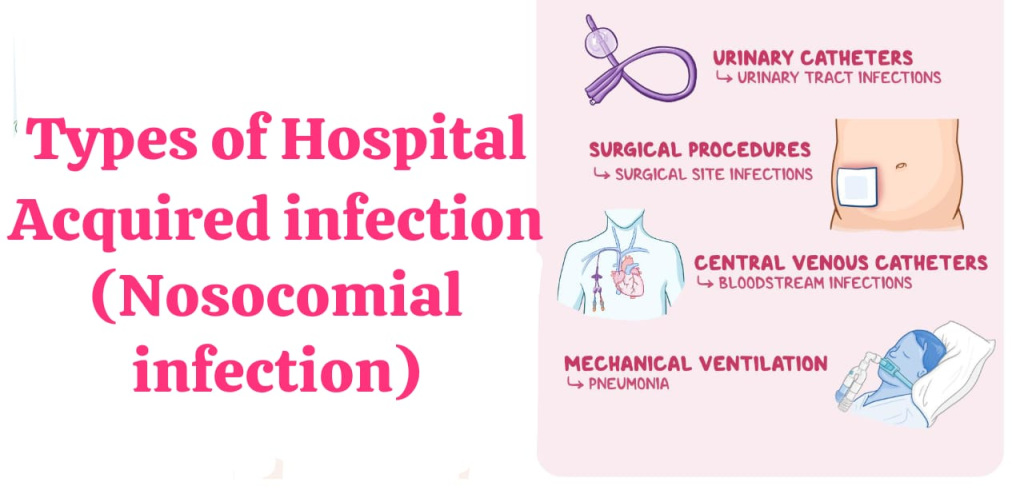
1) CAUTI : CATHETER ASSOCIATED URINARY TRACT INFECTION (Catheter Associated Urinary Tract Infection)

Catheter-associated urinary tract infection occurs due to keeping a catheter in the urinary tract for too long. Some common bacteria that cause catheter associated urinary tract infections: E. coli, Capsicum pseudomonas.
2) SSI : SURGICAL SITE INFECTION
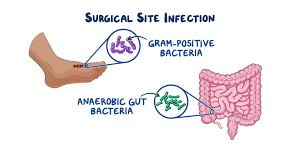
After surgery, an infection develops on the surgical part, that is, the part where the surgery was performed. This is known as a surgical site infection. Common microorganisms are: Staphylococcus, MRSA, Streptococcus.
3) VAP : VENTILATOR ASSOCIATED PNEUMONIA
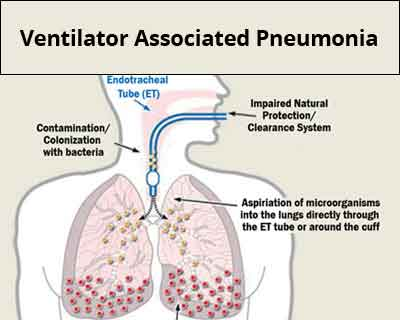
An infection that occurs due to keeping a patient on a ventilator for a long time or providing mechanical ventilation through an endotracheal tube is called ventilator-associated pneumonia. Some common microorganisms: pseudomonas, klebsila etc.
4) CLABSI: CENTRAL LINE ASSOCIATED BLOOD STREAM INFECTION
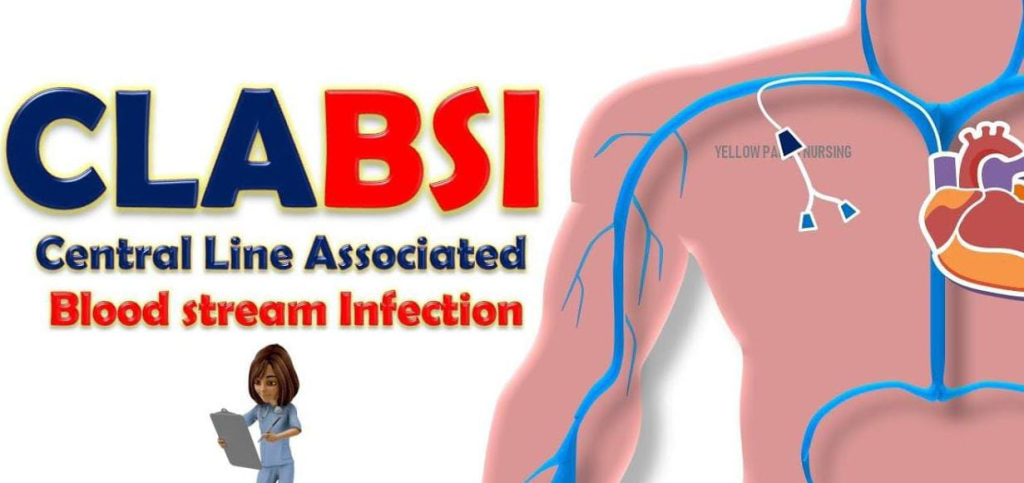
Central line associated infection can occur when a central venous catheter is placed in one of our large blood vessels. Common microorganism :- staphylococcus, enterococci, gram negative bacteria.
WRITE DOWN CAUSES OF HOSPITAL ACQUIRED INFECTION
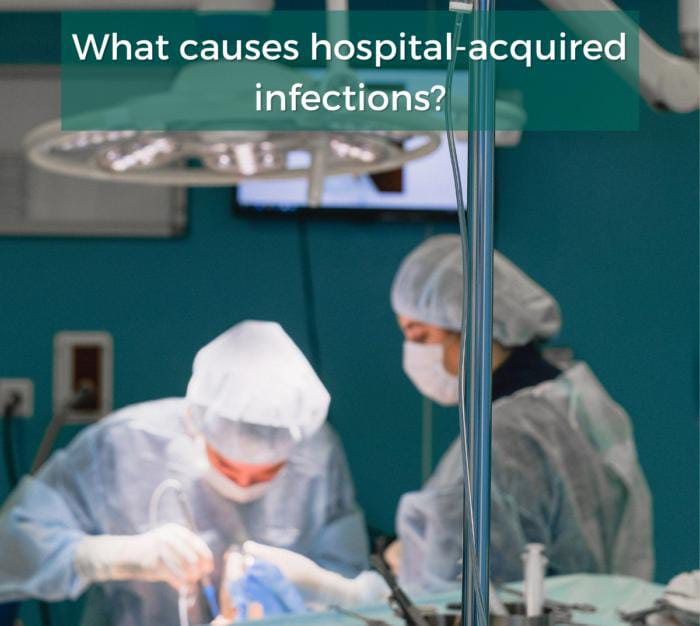
The causes of hospital acquired infections are as follows:
• HAI (Hospital Acquired Infection) can occur due to the use of medical equipment that is not properly sterilized and infected.
• HAI (Hospital Acquired Infection) can occur even if certain types of invasive procedures such as catheterization, surgery, ventilators and aseptic techniques are not used during these procedures.
• Overuse of antibiotics often leads to antibiotic resistance, so HAI (Hospital Acquired Infection) can also occur due to antibiotic resistance.
• HAI can also occur if the patient has low immunity or if he is taking any kind of immunosuppressive drug therapy.
• If adequate infection control practices are not followed in the hospital. For example: Even if hand hygiene is not done properly, HAI can occur due to cross infection.
WRITE DOWN PREVENTION OF HOSPITAL ACQUIRED INFECTION
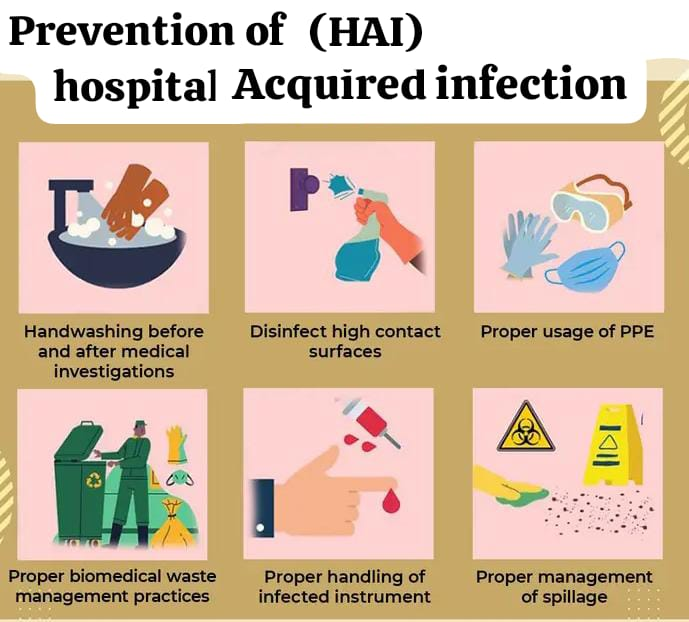
Hospital Acquired Infection (HAI) can be prevented as follows:
• HAI (Hospital Acquired Infection) can also be avoided by regular and proper hand hygiene or hand rubbing, which includes the use of hand washing soap and alcohol-based rub.
• Infection can be avoided by using proper aseptic technique while performing procedures Is.
• Using antibiotics correctly can prevent antibiotic resistance and thereby prevent HAI (Hospital Acquired Infection)
• Regular disinfection of floors and all hospital equipment can also prevent hospital acquired infections.
• Hospital staff should be trained in infection prevention protocols.
CONCEPT OF ASEPSIS (Concept of Asepsis)
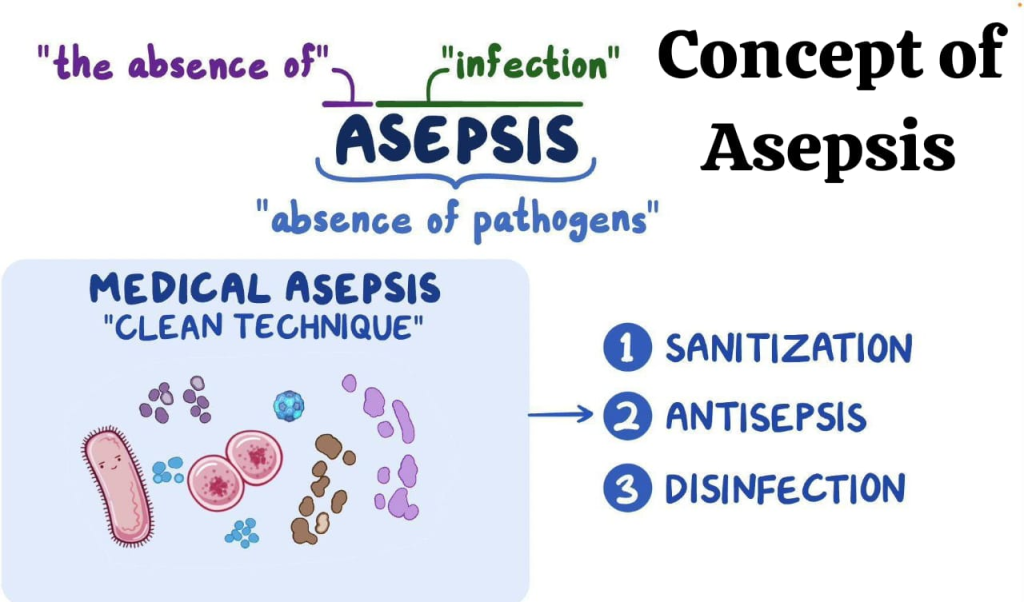
MEDICAL VS SURGICAL ASEPSIS surgical asepsis)
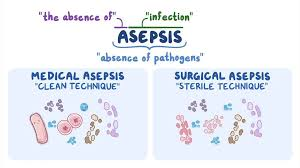
• It is very important to understand ASEPSIS before understanding medical and surgical ASEPSIS.
• ASEPSIS means the absence of pathogens.
• ASEPSIS is a practice by which we can prevent contaminants i.e. bacteria, viruses, fungi and parasites that cause DISEASE from entering the operative field and by which we can make the field STERILE
WRITE DOWN ESSENTIAL COMPONENTS OF MAINTAINING ASEPSIS IN HOSPITAL (Write down essential components of maintaining asepsis in Hospital)
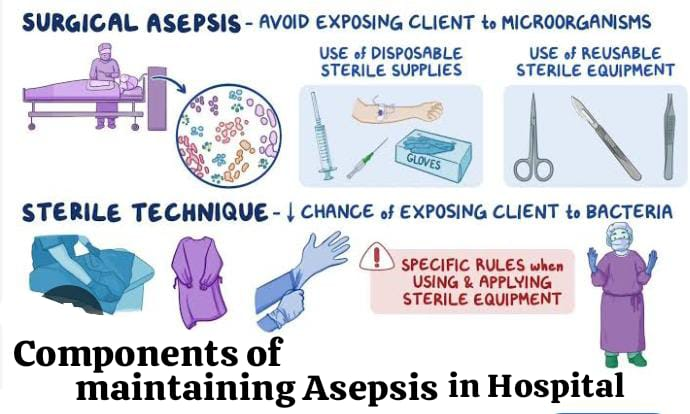
Some important points to keep infection free i.e. ASEPSIS inside the hospital are as follows:
• Hand washing.
• Using gloves, gowns, and masks.
• Properly cleaning and sterilizing equipment.
• Properly handling linen to prevent the spread of germs.
Types of ASEPSIS are as follows which are main 2 :-
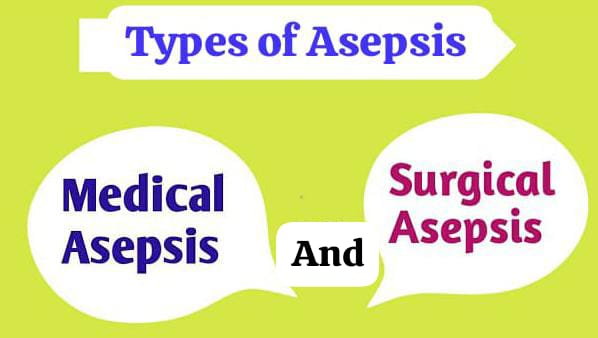
1) MEDICAL ASEPSIS (CLEAN TECHNIQUES)
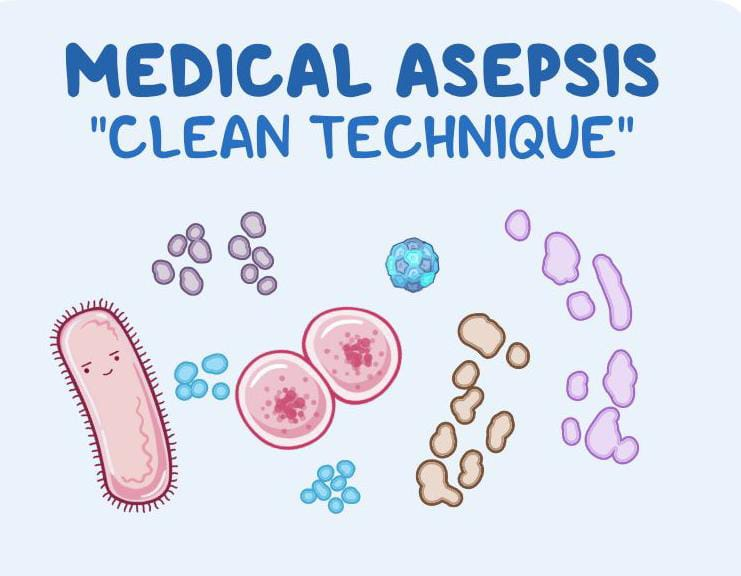
This is a practice that reduces the number of microorganisms. It can be prevented from spreading, but it cannot be eliminated properly. Its main purpose is to prevent the transmission of infection in non-invasive procedures.
The following practices are used for medical asepsis.
1) Hand hygiene
Regular handwashing or handwashing with soap or alcohol-based hand sanitizer.
2) PPE (Personal Protective Equipment)
Use PPE (Personal Protective Equipment) such as gloves, masks, gowns, eyewear, etc.
3) Waste
Waste means proper disposal of waste such as sharp waste, dressings, etc.
4) Isolation
Isolating an infected person to prevent cross-infection with other patients.
2) SURGICAL ASEPSIS (Sterile techniques)
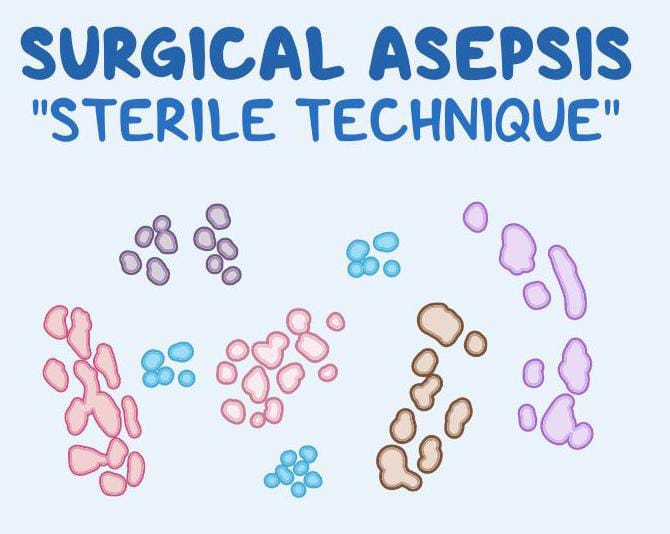
Surgical ASEPSIS is a practice that removes all microorganisms and their spores. Its main purpose is to maintain a proper sterile environment during invasive procedures, surgery. The following practices are used for surgical asepsis:
1) Sterile field
Using sterile dressings and sterile instruments. Strict sterility should be maintained and special care should be taken to ensure that only sterile, i.e., purely sterilized instruments enter the surgical field.
2) Hand antiseptic
Surgical hand scrub should be done with some type of specific hand scrubbing such as Betadine scrub.
3) Sterile attire
Wear gloves, gown, mask and cap.
4) Handling of sterile equipment
Avoid touching nonsterile items. Use sterile techniques to avoid infection and open packages in a way that avoids contamination.
5) Maintaining sterile field
Do not turn away from the sterile field, stand in front of it. If any instrument is contaminated, replace it immediately.
BARRIER NURSING AND ISOLATION KEY CONCEPTS
Barrier nursing and isolation are both important topics, which are as follows. First we will look at Barrier Nursing :
1) BARRIER NURSING :
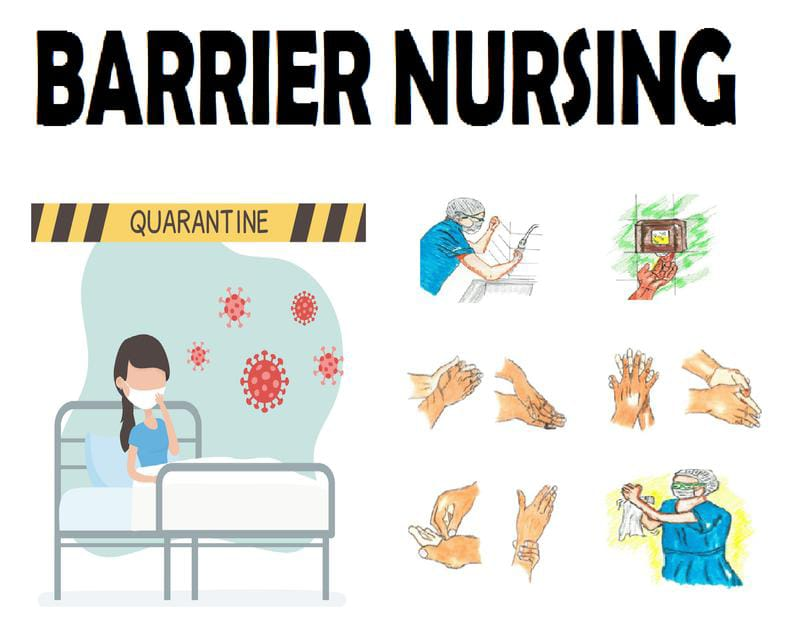
Barrier nursing is a method of nursing care that is designed to protect the patient and the health care provider by creating a barrier and through which we can prevent the transmission of pathogens. Its basic objectives are as follows.
1) Use of P.P.E. Kit:
The PPE kit includes items like gloves, masks, gowns and eye protection through which we can create a barrier to the patient and prevent the transmission of infection.
2) Designated Equipment:
Designated equipment means that a highly infected patient is often isolated and all his things are his separate personal. For example, his separate thermometer, his separate medicine, box, sphygmomanometer, everything is kept separate. Through this too, we can create a barrier.
3) Hand Hygiene :
Before removing PPE or after removing PPE, we should wash our hands strictly immediately after coming into contact with anything.
4) Environmental Control :
Regularly clean the patient’s surroundings, for example, the bed, surfaces, and floors.
5) Waste Management:
Dispose of waste properly. Biohazard waste should be discarded in the same bag as the waste bag. For example, anatomical waste in yellow bag, sharp waste in white bag etc….
• In which patients can we use barrier nursing:
We can use barrier nursing in patients like TB, MRSA etc. in which streak isolation is not required.
2) ISOLATION:
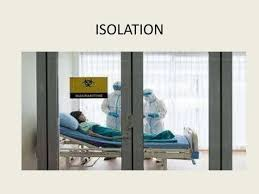
• Separating patients with contagious diseases. – By which we can prevent the spread of infection, it is called isolation. The types of isolation are as follows:
• Standard isolation
• Contact isolation
• Droplet isolation Isolation)
• Airborne isolation
• Protective or Reverse isolation
Standard isolation
This isolation is used for all patients, assuming that all body fluids are infectious.
Contact isolation
Contact isolation is used for infections that spread through direct contact, such as MRSA and Clostridium difficile. Inside which gloves, gowns and patient-specific equipment are kept.
Droplet isolation
Droplet isolation is used for infections that are spread through droplets, for example influenza, pertussis, etc. The main measures include maintaining a distance of 3 to 6 feet from the patient and wearing a mask.
Airborne isolation
This isolation is used for diseases that spread through the air, for example, TB, measles, chicken pox, etc. This mainly includes N95 respirators, negative pressure rooms and N95 masks.
Protective or Reverse isolation
Protective isolation is used for patients whose immunity is severely compromised. For example, patients undergoing chemotherapy. Its main focus is to prevent visitors, use PPE and maintain a sterile environment.
SET UP OF ISOLATION ROOM
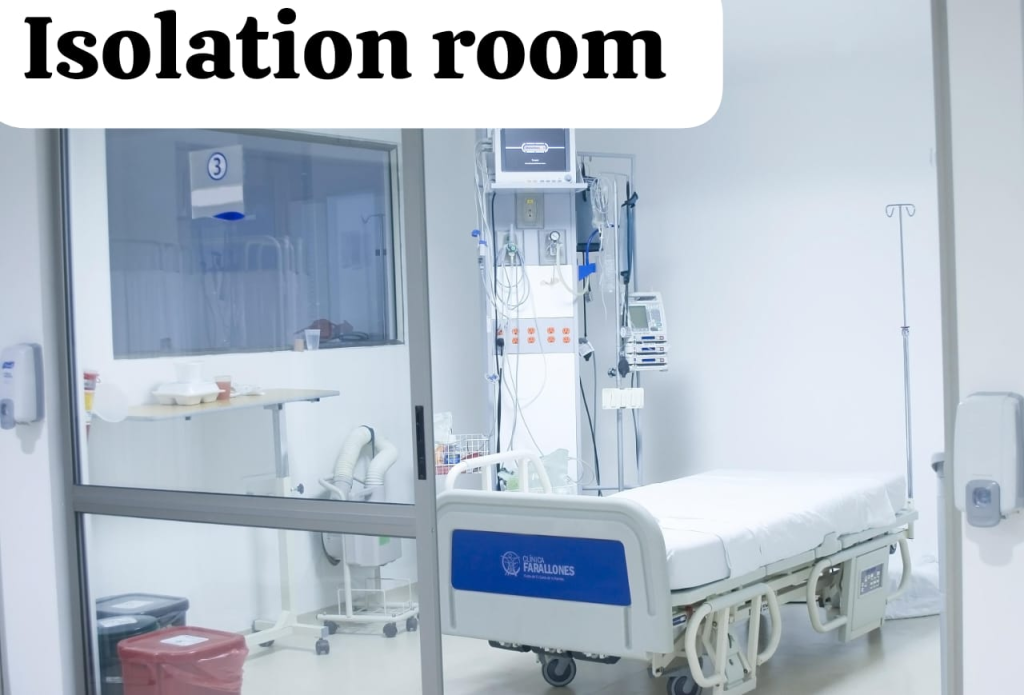
There is a single room that is specifically for the patient. The negative pressure room is there to prevent any pathogens from escaping. There are dedicated bathrooms that are only for infected persons. With which we can reduce the risk of infection.
PPE – PERSONAL PROTECTIVE EQUIPMENTS

The types of Personal Protective Equipment (PPE) are classified based on the part of the body it protects.
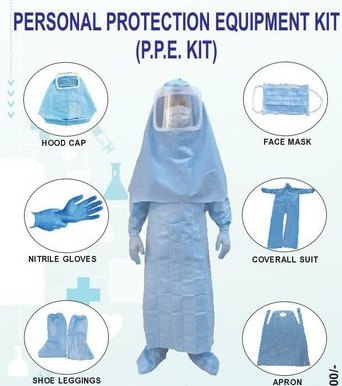
1) Head Protection: Head protection is designed to protect our heads from anything that falls on us. e.g. hard hats and helmets
2) Eye and Face Protection: This protection is designed to protect the eyes and face from debris, chemical splashes, and certain types of harmful radiation. eg :- Safety goggles, welding helmet, face shield etc..
3) Hearing Protection : To protect against the harmful effects of certain harmful voices Eg :- Earplugs, ear muffs
4) Respiratory Protection : Respiratory protection protects against the inhalation of certain types of harmful drugs, dust, gases or airborne pathogens. eg: Mask, Self-Contained Breathing Apparatus (SCBA)
5) Hand Protection: Hand protection is used to protect the hands from chemical, cut, abrasion, heat and biological hazards. Eg. Gloves (latest, nitrile, cut resistant, heat-resistant)
6) Body Protection: To protect the body from chemical splashes, burns and contaminants. E.g. Cover rolls, lab coats, aprons etc.
7) Foot Protection: To protect the feet from any object falling on the feet, puncture or slip. E.g. Steel toe boots, slip resistant shoes
8) Fall Protection: To protect against falls from heights in any industrial area or construction site. Eg.: Lanyards, Harnesses.
9) Skin Protection: To protect the skin from radiation, UV exposure and harmful chemicals. Eg:- Sunscreen, Chemical Resistant Clothing.
WRITE DOWN TECHNIQUES OF WEARING PPE
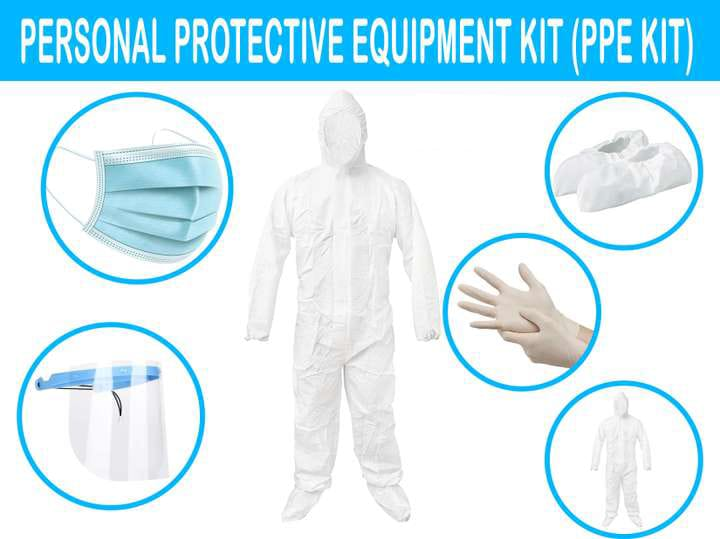
It is very important to wear PPE while performing any surgical procedure. Through it, we can prevent cross infection. Due to which the patient does not get infected and the medical personnel also does not get infected. PPE The process of wearing is called donning. The steps of the process are as follows:
1) Surgical hand hygiene (Performing surgical head hygiene)
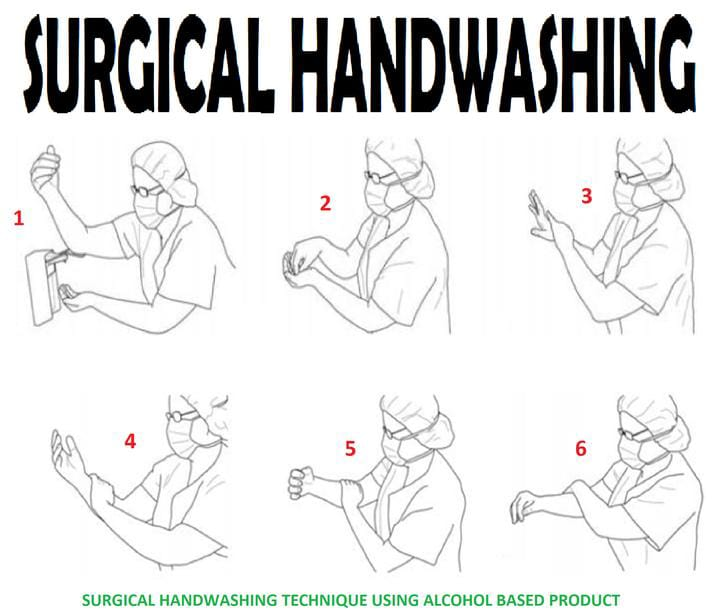
• Surgical hand washing is a process by which we can completely disturb dirt and microorganisms and remove them from the hands and fingers through mechanical action and chemical action.
Purpose :
• Microorganisms can be prevented from being transmitted to the patient.
• The patient can be protected from cross-infection.
• Medical personnel themselves can be protected from infection.
• The patient can be protected from iatrogenic (infection that occurs during any invasive procedure) infection.
Equipments (Equipments) :
• Warm running water
• Antiseptic soap solution
• Nail brush
• Sterile towel
Steps of procedure:
• If any artificial nails are applied, remove them and remove the nail polish.
• If any jewelry is worn, remove it Removing – turning on the water with the foot or elbow, i.e. turning on the water with the elbow, knee or foot.
• Wet hands with warm water and apply soap or detergent up to five centimeters above the elbow.
• Hands should always be above the elbow.
• Wash hands under running water – Stroke the nails with an antimicrobial agent 15 times, i.e., clean one nail 15 times using any brush.
• Then scrub hands with Betadine or any antiseptic scrub.
• Apply the scrub up to five centimeters above the elbow and inside the antecubital fossa and leave it on for five to ten minutes.
• Wash your hands after five to ten minutes.
• Take special care that during this process, our hands should not touch the side of the sink or any sink.
• After rinsing your hands, wipe your hands from fingers to elbows with a dry sterile towel.
2) Wearing gown
Purpose:
• To keep droplets emitted by medical personnel or droplets from the environment away from the patient
• To avoid contamination of the sterile field
• To allow easy handling of sterile equipment
Steps of procedure (Step of Procedure) :
• Hold the gown by its neck and unfold it in a way that it does not touch our uniform or any part of our body.
• Keep the gown at our shoulder level and hold it from the inside and then slowly let our hands go into both the arm holes provided in the gown.
• Keep the hands up to the shoulder level and then let both the hands go into the arm holes.
• Then tell the circulatory nurse to pull the back side properly from the inside of the gown and tell her to tie the laces provided at the back properly and tightly.
3) Putting on mask or respirator (Mask or respirator)
4) Wearing eye protection : (Eye protection goggles) Wearing eye protection and face shield.
5) Wearing gloves (Hand gloves)
Purpose:
• To protect the nurse from pathogenic microorganisms
• To handle any sterile article without contaminating it
Steps of procedure:
• Ask the circulatory nurse to carefully open the outer packaging of the gloves without contaminating them.
• Then scrub Nurse takes out the sterile packet inside
• Identify the right and left glove.
• First put on the glove in the dominant hand.
• Then let the thumb go inside the glove first and then let the fingers go inside.
• Then, with the non-dominant hand, grasp the cuff of the glove from the inside and pull it inwards.
• Make sure that the fingers and thumb of the dominant hand are properly fixed in the glove.
• Now, grasp the glove of the non-dominant hand from the outer cuff and let the thumb and fingers of the non-dominant hand go inside.
• Make sure that the dominant hand does not touch the inside of the glove.
• Interlock both hands and keep them above the elbow level.
• All the steps and procedures given above are called the process of DONNING.
DOFFING
Doffing is the process of removing PPE. The following steps are followed in it.
1. GLOVES
2. GOWN
3. HAND HYGIENE
4. REMOVE EYE PROTECTION
5. REMOVE MASK
6. THEN AGAIN PERFORM HAND HYGIENE
STERILIZATION OF ARTICLES:
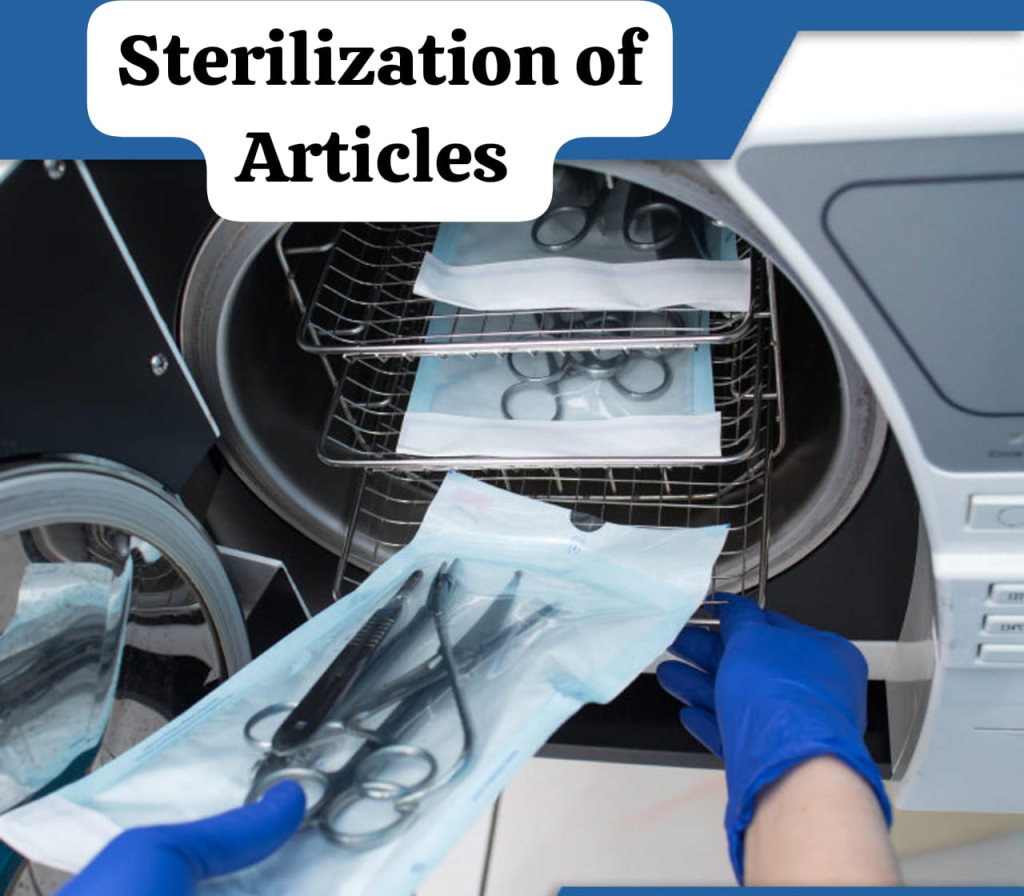
Sterilization is a process by which an object is completely free from microorganisms. Some of the processes are given below:
• Boiling
• Cold sterilization
• Fumigation or gas sterilization
• UV Light sterilization or radiation
• Dry heat sterilization or hot air oven sterilization
• Autoclaving
Boiling
To disinfect the object at 100°C for 10 minutes. Its advantages are as follows:
• This process can be done at home.
• It does not require any other environment, space or situation.
• It does not involve any other costs.
Its disadvantages are as follows:
• Some types of bacteria, viruses or spores are resistant to the boiling process.
• This process is not very effective for them – the edges of some types of objects become blunt.
• For this reason, boiling is not particularly used for objects such as scissors.
Cold sterilization
• In this, any chemical disinfection is used
• Chemical disinfectant coagulates the proteins of bacteria, i.e., freezes them, due to which their protein composition changes and they cannot exist for a long time
Its advantages are as follows:
• Such We can use this process in objects that are prone to corrosion and this is the easiest process.
Its disadvantages are as follows:
It does not kill spores 100%, which can lead to infection.
• Some chemical disinfectants can injure the skin.
FUMIGATION OR GAS STERILIZATION (Fumigation or Gas Sterilization)
All surfaces are exposed to a gas called formaldehyde, which kills all bacteria, viruses and spores.
• This involves maintaining a temperature of more than 18 degrees Celsius and a high concentration of gas, with an exposure time of 1 to 16 hours.
• Commonly used fumigation products such as formalin tablets, ethylene oxide liquids, etc.
• One disadvantage of this is that it has a very bad smell and can irritate the eyes, skin and skin.
ULTRAVIOLET (NON IONIZING) LIGHT STERILIZATION OR RADIATION (Ultraviolet Light Sterilization or Radiation)
• Radiation from 150 to 3900 Å is used within UV radiation.
• Which has 2600 Å radiation inside it gives highly bacterial side effects i.e. which has the ability to kill highly bacteria
• Its penetration power is very low due to which the surface i.e. the bacteria present on it die.
• This radiation changes the replication of the DNA of the bacteria and mutates the DNA due to which the death of the microorganism occurs.
Extreme care must be taken in transferring an infected patient, including strict infection control measures, including strict adherence to infection control guidelines by the healthcare provider, patient, and transferee.
1) Pretransportation Precaution:
• Assess the patient’s condition.
• Is the patient stable or not? Or does he need emergency transport?
• Identify the type of infection.
• Classify whether it is an airborne infection or a contact infection. e.g. tuberculosis, MRSA etc.
• Inform the receiving facility.
• Check if the hospital has the necessary facilities.
• Use PPE properly.
• Health care workers should wear gloves, gowns, and eye protection, and use PPE as appropriate for the infection.
• Prepare transfer vehicles.
• Arrange for dedicated wheelchairs or stretchers. Cover surfaces with disposable or cleanable barriers. Check for proper ventilation.
2) Precaution During Transportation:
• Take infection specific precautions such as wearing a surgical mask for the patient in case of airborne infection and wearing an N95 respirator for the staff.
• During droplet infections (such as pneumonia, meningitis), the patient should wear a mask and the person transporting should wear gloves and a mask Wear.
• Contact infections (such as MRSA, C. difficile) require hand hygiene and protective gloves.
• Avoid contact: involve fewer people.
• Proper handling of equipment.
• Avoid cross-contamination by cleaning and disinfecting all transport surfaces
• Monitor patient stability and continue monitoring if patient is critically ill.
3) Post Transport Decontamination:
• Clean and disinfect hot spots Use approved disinfectants on all surfaces.
• Dispose of used PPE.
• Hand Hygiene: – Wash hands with proper steps after transport. If a worker has been exposed, follow the hospital’s exposure protocol.
4) Special Consideration:
If a person is HIGHLY CONTAGIOUS (very infected), then transport them by making a negative pressure transport chamber available.
• Take special care of cleanliness in the surroundings of immunocompromised (whose immunity is very low) patients and take great care to avoid secondary infection.
STANDARD SAFETY PRECAUTIONS: (Standard Safety Precautions)
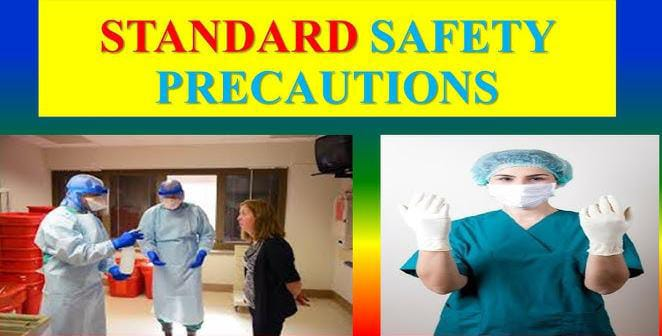
Standard safety precautions are used in hospitals to protect patients, healthcare providers, and visitors from infection and injury. These include the following precautions: 1) Infection control precautions: • Hand hygiene (hand wash and hand rub) • PPE (Personal Protective Equipment) • Safe injection practices (sterile needles and syringes, and proper disposal of sharp instruments in their containers) Discard)
• Cleaning and disinfection (Regularly sanitize surfaces, medical equipment, patient area.)
2) Patient Safety measures
• Patient identification – Check two pieces of identification (name, date of birth, medical record number (MRD NO.) or go to the patient and ask for the patient’s full name before administering the medicine.
• Pay special attention to fall prevention.
• Assess fall risk, provide non-slip socks and footwear.
• Follow patient’s medicine safety rights.
10R

• RIGHT DRUG
• RIGHT PATIENT
• RIGHT DOSE
• RIGHT ROUTE
• RIGHT TIME
• RIGHT DOCUMENTATION
• RIGHT CLIENT EDUCATION
• RIGHT TO REFUSE
• RIGHT ASSESSMENT
• RIGHT EVALUATION
It is mandatory to follow all these rights step by step.
3) Workplace and environment safety (Workplace and environment safety)
Discard sharp instruments in their proper containers
Fire safety (Fire Safety) :- For fire safety, all trains should be equipped with fire emergency exits, fire alarms, fire extinguishers etc., everyone should have knowledge about them – RACE and PASS protocol should be known.
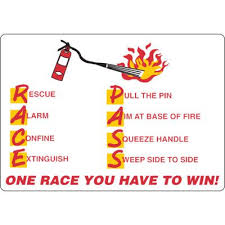
Rescue : Respond to the fire (respond to the fire, call for help and rescue the patient).
Alarm : Call for help (call someone for help and activate Code Red)
Confine : Contain the fire (close off paths that could spread the fire, such as windows)
Extinguish/Evacuate : Put out the fire or leave the building (use a fire extinguisher to put out the fire)
Technique for opening a fire extinguisher :-
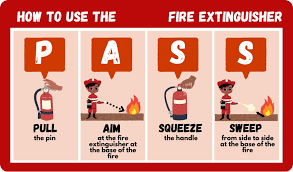
• Pull : Pull the pin on the fire extinguisher
• Aim : Aim the extinguisher at the base of the fire
• Squeeze : Squeeze the handle of the fire extinguisher (then press the handle)
• Sweep : Sweep the extinguisher side to side (turn the extinguisher side to side)
• Electrical safety : Check equipment in the area and discard it if not in use. Safe patient handling: – Take proper assistance to prevent injury.
4) Emergency Preparedness
Take Code Response Training:- Hospitals, especially NABH (National Accredited Board Hospital and Healthcare) standard hospitals, use certain codes for emergencies and the specific numbers of those codes are made as per the hospital policy, some of which are as follows:
Code Red (Code Red) – Fire Emergency (When there is a fire)
Code Blue (Code Blue) – Medical Emergency (Cardiac Arrest)
Code Yellow– Disaster or Mass Casualty Incident
Code Black– Bomb Threat
Code Pink – Infant or Child Abduction
Code White – Violence or Aggression.
Code Orange – Hazardous Material Spill
BIOMEDICAL WASTE MANAGEMENT :
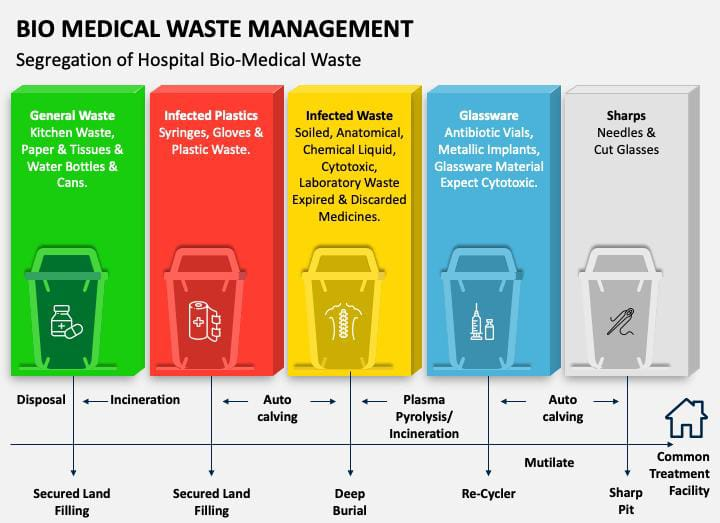
It is important to properly discard the waste generated in the hospital. Because, hospital waste is hazardous and can create problems like infection, injury, etc. to an uninfected person. For this, human and animal harm can be prevented through hospital waste management.
1) CATEGORIES OF BIOMEDICAL WASTE (Categories of Biomedical Waste)
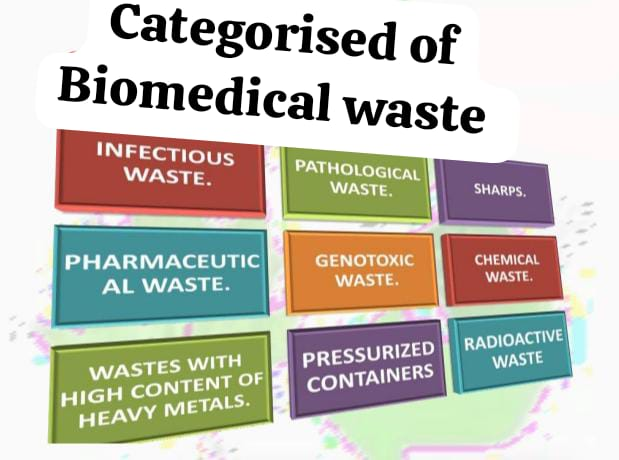
• Infected Waste : Blood, Body Fluids, Contaminated Material
• Pathological Waste : Human Tissue, Organ and Body Fluid, Body Parts
• Sharp Instrument Waste: Needles, syringes, scalpels, and broken glass
• Pharmaceutical Waste: Expired or unused medications
• Chemical Waste:Disinfectants, reagents, and solvents
• Radioactive Waste: A waste in which radioactive substances are present.
2. WASTE SEGREGATION AND COLUR CODING (વેસ્ટ સેગરેશન એન્ડ કલર કોડિંગ)
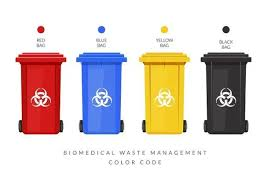
• YELLOW BIN
Infected and anatomical waste comes inside the yellow bin such as, human anatomical waste, gauze or items exposed to any body fluids, used dressings, expired medicines, etc.
• RED BIN (Red Bin)
All plastic waste, rubber waste, IV set, tubing, gloves, etc.
• BLUE BIN (Blue Bin)
All glass items will go in this bin. Especially glass waste, glass syringes will all come in blue.
• WHITE BIN (White Bin)
All sharp items will go in this bin. Especially needles, stilettos, all of these will come in white and glass waste, glass syringes will all come in blue.
• BLACK BIN (Black Bin)
General waste comes in the black bin. Which does not pose any hazard.